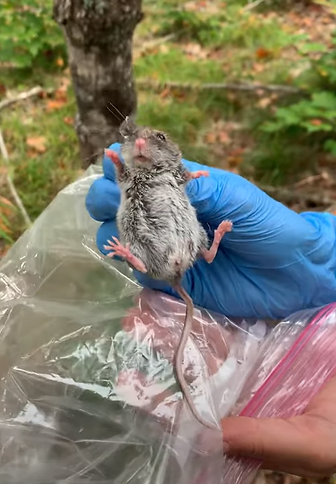
Wolfe Laboratory
Michigan Technological University

Zoonotic Disease Under Global Change
Habitat degradation and climate change have led to the northward expansion of zoonotic diseases, wildlife reservoirs, and vectors. Monitoring changes in the prevalence and distribution of these diseases can help identify and mitigate risks to both vulnerable wildlife and human populations.
Drivers of Small Mammal Reservoir Abundance and Disease Prevalence
Leveraging funding from the MI-SAPPHIRE grant, we work with a collaborative group of researchers to study the rapid spread of tick-borne diseases in the Upper Peninsula of Michigan. Recognizing the region as a critical expansion front for these diseases, we have established a network of trapping grids across diverse forested systems in the western Upper Peninsula. This project aims to comprehensively understand the environmental drivers influencing the abundance of small mammal disease reservoirs, such as white-footed mice and eastern chipmunks, and the prevalence of tick vectors, particularly black-legged ticks. By analyzing these interactions, we seek to uncover the factors that drive the spread of tick-borne diseases like Lyme disease. Our ultimate goal is to inform and develop effective strategies to manage and mitigate the transmission of these zoonotic diseases to humans, ensuring better public health outcomes for our community.
Citizen Science Tick Monitoring Project
To study the disease prevalence within ticks encountered by community members, we collaboratively initiated a citizen science project called “Tick-Talk Monitoring,” supported by the MI-SAPPHIRE grant. This project leverages the power of crowdsourcing to monitor tick populations in the Upper Peninsula and nearby regions. By engaging community members in collecting ticks and conducting comprehensive analyses, we can generate real-time geolocation data, visualized on our interactive dashboard. This innovative strategy merges citizen science, technology, and education to create a comprehensive public health safety net, ensuring our communities remain informed, proactive, and protected. To date, residents have submitted thousands of ticks, with significant findings including Lyme-positive, Anaplasma-positive, and Rickettsia-positive ticks. This collaborative effort enhances our understanding of tick-borne illness prevalence and helps inform public health strategies in the Copper Country and beyond.

